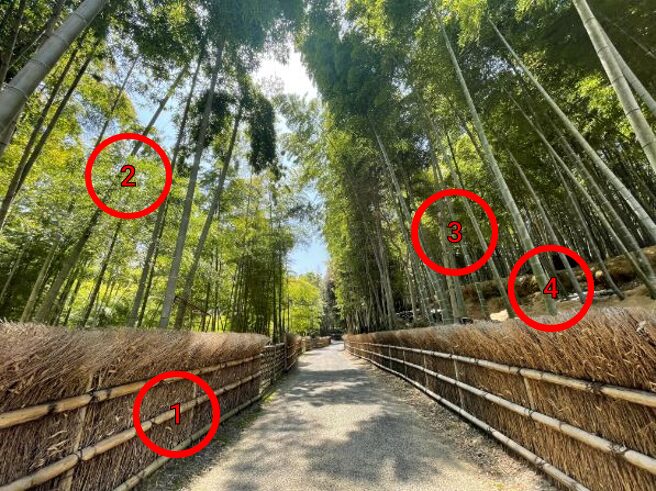
※Please stay out of the bamboo fields
What if we told you there’s a place that rivals the bamboo groves of Arashiyama?
Well, there is.
The Muko Bamboo Path, also known as Take-no-Michi, is a sight to behold and has 1.8 kilometers (roughly 1.1 miles) of bamboo groves to explore. There’s no other place quite like the Muko Bamboo Path in Kyoto. Its beauty has earned it fame beyond Japan, appearing in commercials and even pre-wedding photoshoots.
The Muko Bamboo Path is nestled in the Otokuni area of Kyoto Prefecture, about 30 minutes from Kyoto Station, making it perfect for a one-day trip. Although cars can drive on the path, it is better to explore it by walking. Parking is available at the Kyoto City Rakusai Bamboo Park.
The best part? This beautifully maintained landscape showcases Japan’s climate, agriculture, and cultural traditions.
The sound of the bamboo swaying in the wind and birds chirping creates a deeply soothing atmosphere. It’s like forest bathing, but in a bamboo grove—a chance to immerse yourself in fresh air and pure tranquility.
During your visit to the Muko Bamboo Path, you’ll discover 4 unique features you won’t find anywhere else.
① Masterfully crafted bamboo fences, designed by a renowned artisan whose work also graces World Heritage sites and famous gardens.
② Thoughtfully pruned bamboo groves, kept at the perfect height to prevent overgrowth.
③ Spacious bamboo shoot fields, allowing enough room to walk with an open umbrella.
④ A distinctive landscape shaped by the soil enrichment process, which nurtures tender bamboo shoots in soft earth.

※Please stay out of the bamboo fields
One of the most prominent features of the Muko Bamboo Path is its bamboo fences. About 20 years ago, they were introduced to combat illegal dumping, which was once a significant issue in the area.
At Muko City’s request, six renowned bamboo producers, with master craftsmen who had worked on bamboo fences for World Heritage sites and famous gardens, formed a council and began building the Muko Bamboo Path’s iconic fences. What began as a 500-meter project grew to 1.8 kilometers, with diverse fence styles showcasing expert craftsmanship. In addition to their artistic charm, these fences have helped preserve the area by reducing illegal dumping and supporting local bamboo farmers.
Many of the bamboo fences in the Muko Bamboo Path have unique designs and names. The Muko Bamboo Path is bordered on both sides by eight distinct fence designs. These include the Takeho-gaki design, which is made up of 1.5-meter-tall bundles of bamboo branches, as well as the Raikoji-gaki, Kaguya-gaki, Mozume-gaki, Terado-gaki, Kofun-gaki, Fukada-gaki, and Kaido-gaki designs. (See picture below for details)
The fences here are made with moso bamboo, a type of edible bamboo. What’s more, most of the designs and names are entirely original. These bamboo fences are crafted using reclaimed materials, sourced from waste bamboo produced during the cultivation of kyo-takenoko, the region’s renowned bamboo shoots.
For over 20 years, they have been implementing Sustainable Development Goals (SDGs) through the maintenance of the Muko Bamboo Path.
Recently, many famous temples have started using plastic green bamboo fences to reduce maintenance costs. While bamboo is often associated with its vibrant green color, real bamboo changes color over time as it loses moisture.
Over the years, the changing appearance of the bamboo fences adds character and charm.
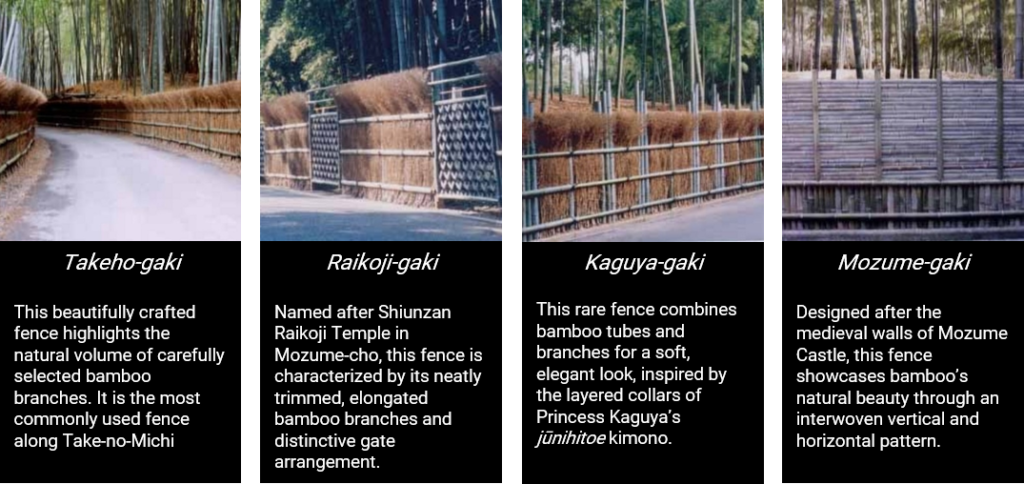
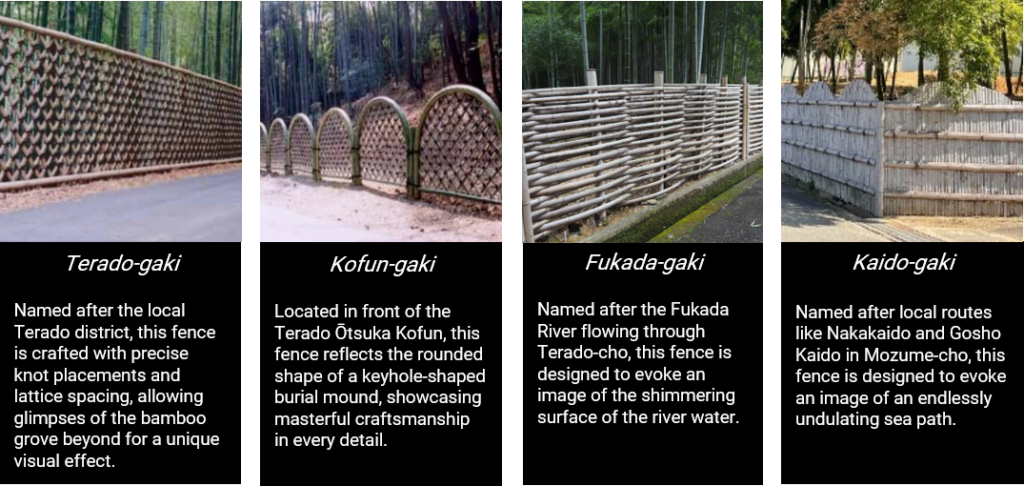
The open nature of the grove and the bamboo fences that line its path wouldn’t be possible without the farmers who maintain it. All of that maintenance is a lot of hard work, but necessary for cultivation.
The lush bamboo forest along the Muko Bamboo Path is so beautiful, it could be mistaken for a garden. This area is home to bamboo shoot fields (takenoko-bata), cultivated by expert farmers using traditional methods passed down for generations.
Located in the northwest hills of Muko City, this is where the renowned kyo-takenoko bamboo shoots are grown.
Only Kyoto is home to bamboo shoot fields. During April, the bamboo shoot fields come alive with the harvest, and you can see farmers using uniquely shaped hoes to dig up the bamboo shoots. Don’t miss the chance to glimpse this unique scene from outside the bamboo fences.
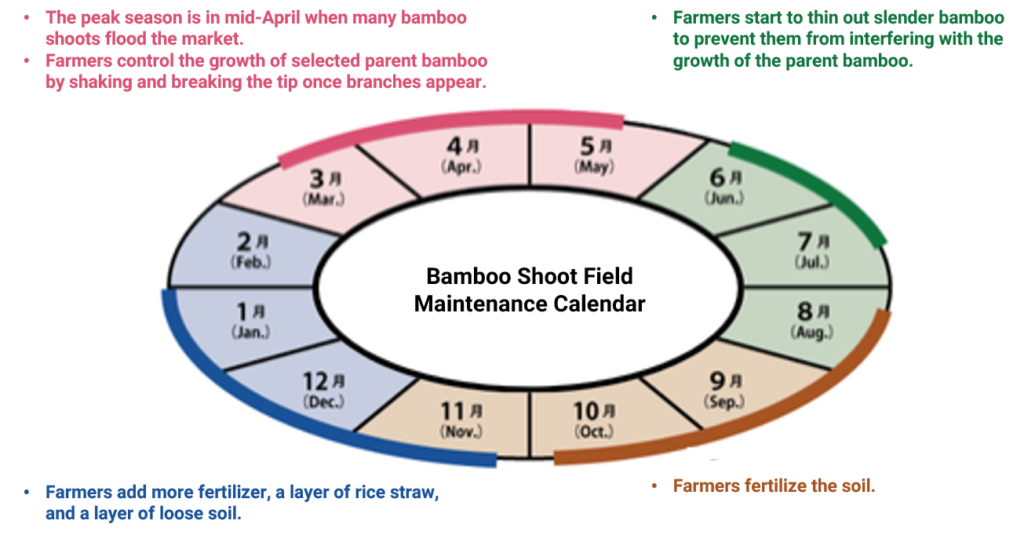
The cultivation process begins in early March. The peak season runs from mid-April, when many bamboo shoots flood the market.
In early April, “parent” bamboo are carefully selected for the next season’s harvest. Choosing the right bamboo at this stage is crucial for growing high-quality bamboo shoots.
In early May, farmers control the growth of selected parent bamboo by shaking and breaking the tip once branches appear. This helps redirect nutrients to the roots to enhance growth.
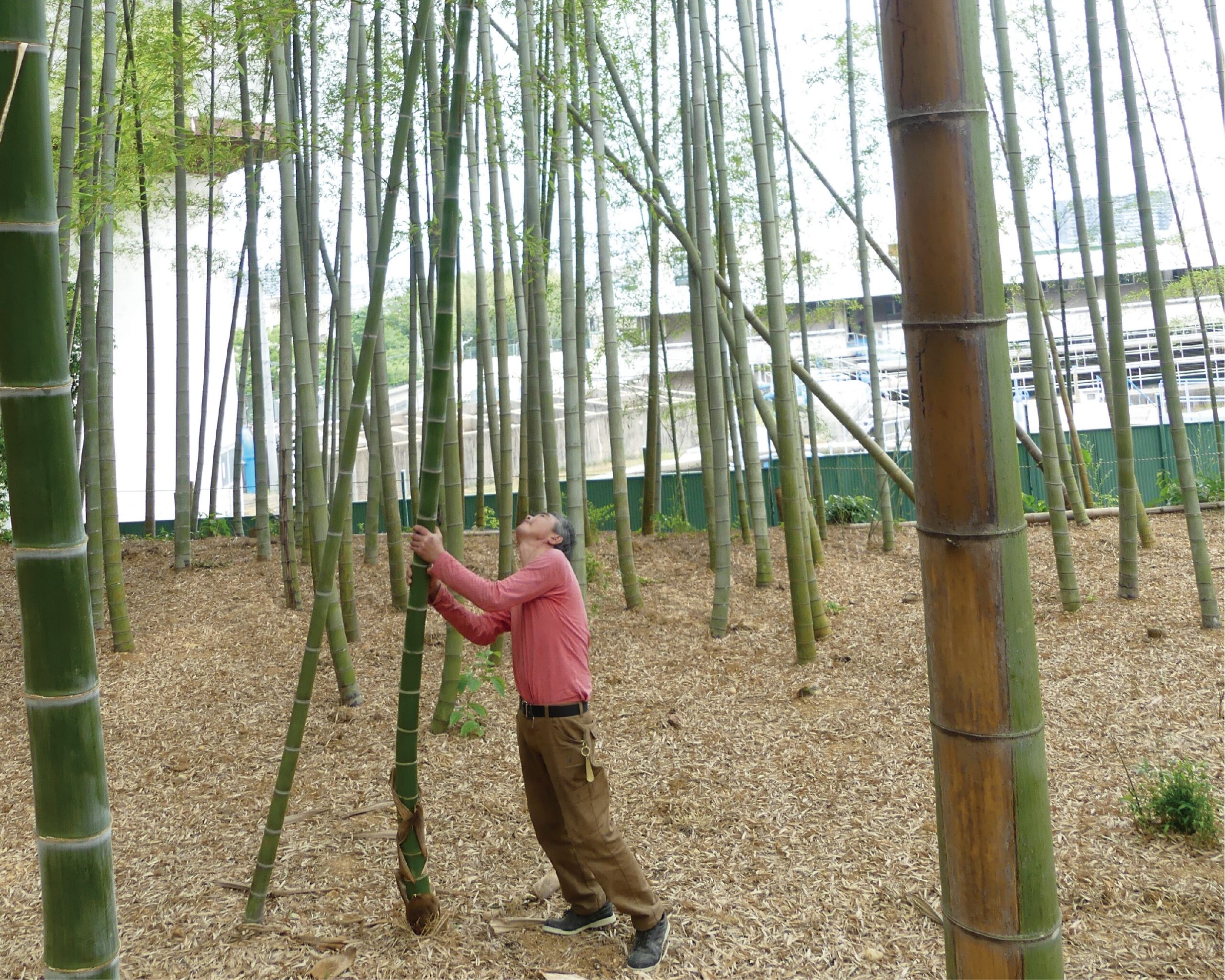
From around June to July, farmers start to thin out slender bamboo to prevent them from interfering with the growth of the parent bamboo. This process is known as sabae-kari. In late summer, they fertilize the soil to enrich the thin roots spread throughout the bamboo grove. Older parent bamboo (6-7 years old) are also cut down at this stage. This ensures nutrients are distributed to the new parent bamboo.
From November to December, farmers add more fertilizer, a layer of rice straw, and a layer of loose soil. This important process not only enriches the soil as the straw decomposes, but also delays the bamboo shoots from surfacing, helping to grow high-quality shoots. Then the process begins again.
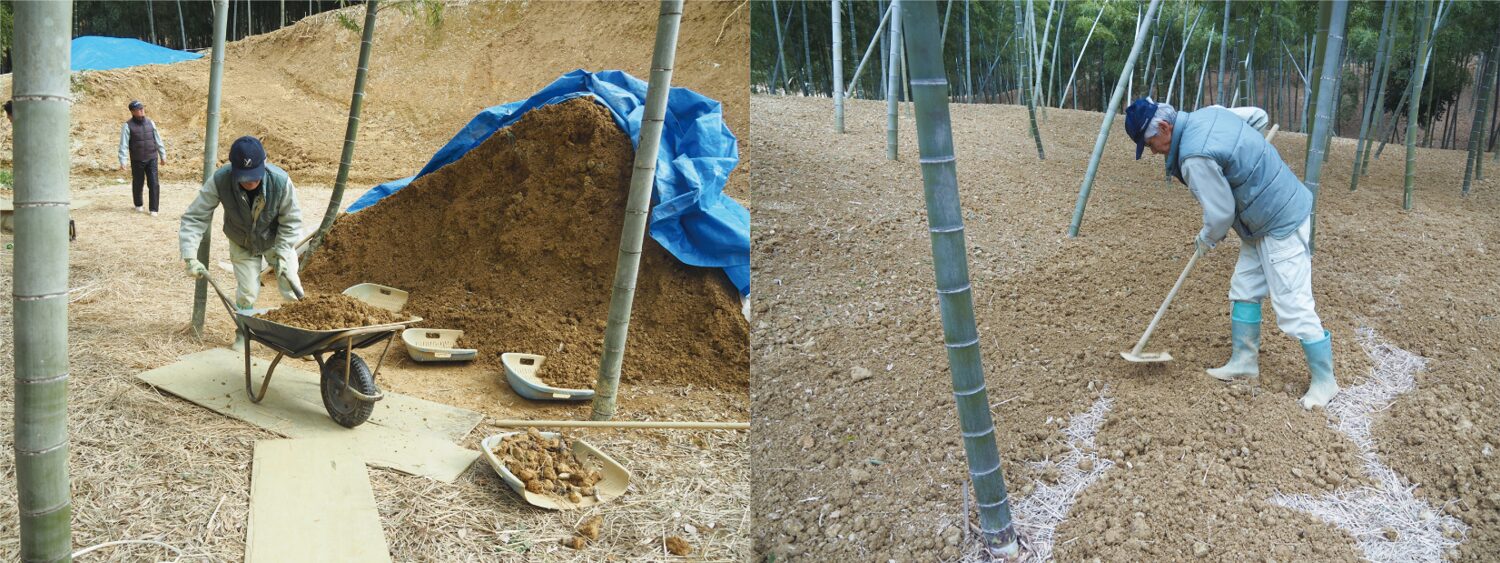
After the soil is prepared, the bamboo grove shines brightly as light reflects off the new layer of soil, creating a beautiful, glowing effect. This is the most visually stunning time of year.
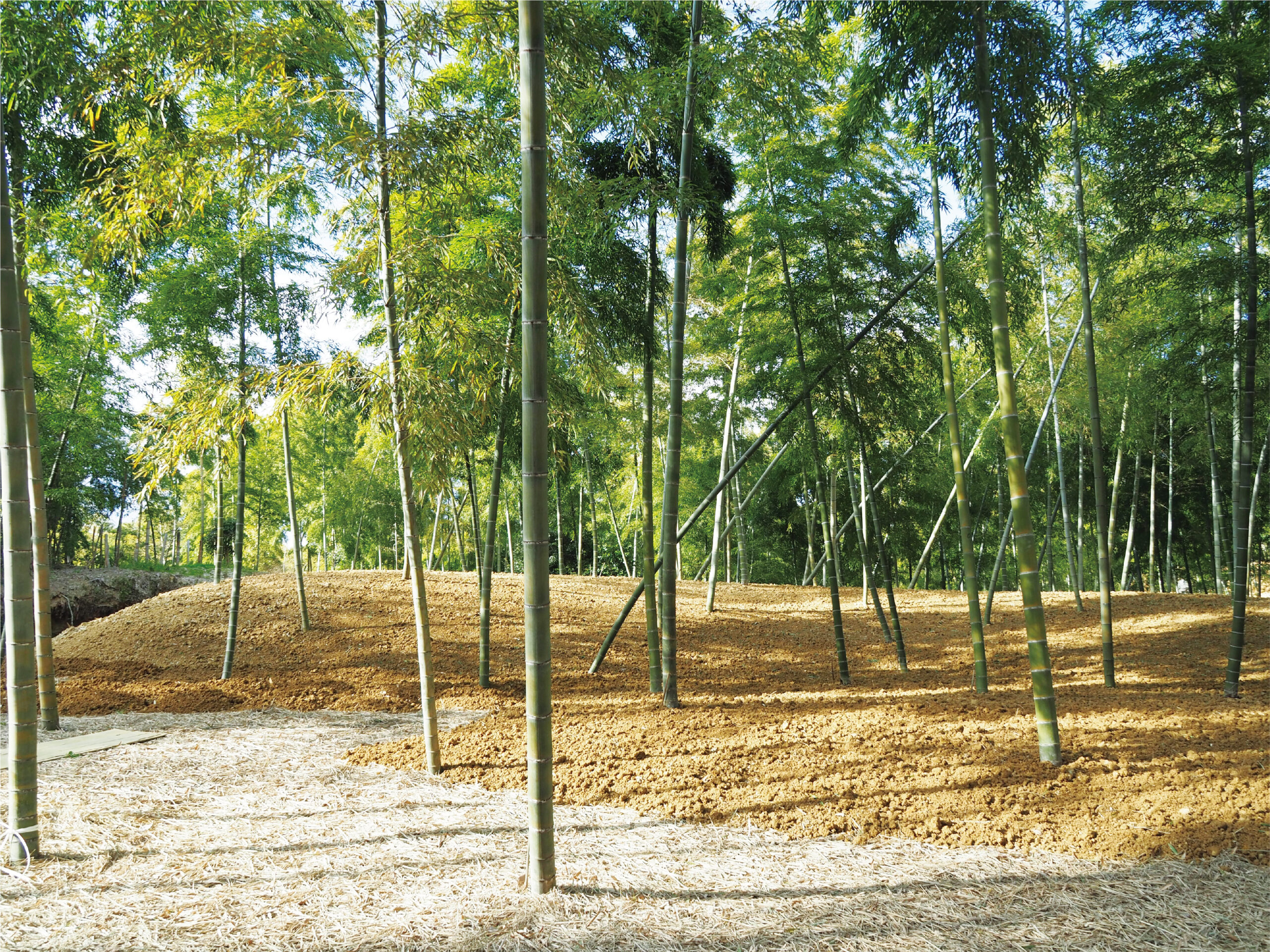
The Muko Bamboo Path offers an in-depth look into the local culture and history of the Otokuni area. You can also enjoy seasonal events such as the light-up event in mid-October known as Princess Kaguya Nights at the Bamboo Path. During this event, thousands of bamboo lanterns illuminate the path, casting a soft glow through the grove. This enchanting scene is a photographer’s dream and a must-see for anyone visiting Kyoto in the fall.
The Muko Bamboo Path offers a blend of natural beauty, cultural depth, and culinary delights, making it a destination that deserves a spot on your itinerary.
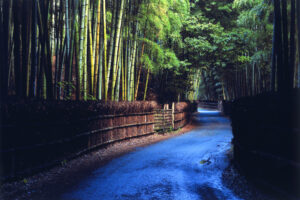
Bamboo shoots are one of Kyoto’s specialty products, but the “Otokuni” area around Muko City and Nagaokakyo City is known for producing some of the highest quality bamboo shoots in Kyoto. Take-no-Mich …
For those eager to learn more about bamboo, the surrounding area offers various cultural experiences and historical sites that delve deeper into its significance in Kyoto’s past and present.
One such spot is Kyoto City Rakusai Bamboo Park, located right next to the Muko Bamboo Path. This park features 110 varieties of bamboo, including some that are extremely rare. It also houses the Bamboo Museum, where you can explore bamboo displays and information about Kyoto’s bamboo heritage in English. The museum offers a variety of bamboo crafts and goods for sale, making it a great place to find unique souvenirs. Additionally, the park includes a Children’s Square, a popular spot where locals often bring their children to play. If you’re traveling with young ones, consider stopping by for a fun and relaxing visit.
If you plan on visiting, our most recommended way is to tour the Otokuni area by chartered taxi. The area is also easily accessible by bus and a short walk. To get to the Muko Bamboo Path from Kyoto, take a bus from “Katsuragawa” station on the JR Kyoto line or “Rakusaiguchi” station on the Hankyu Kyoto line and get off at “Muko Kaisei Hospital”, then walk for 10 minutes.
With its peaceful paths, rare bamboo varieties, and engaging cultural experiences, the Muko Bamboo Path offers something for everyone. Add it to your wish list and start planning your visit today to discover all the hidden treasures this remarkable destination has to offer!